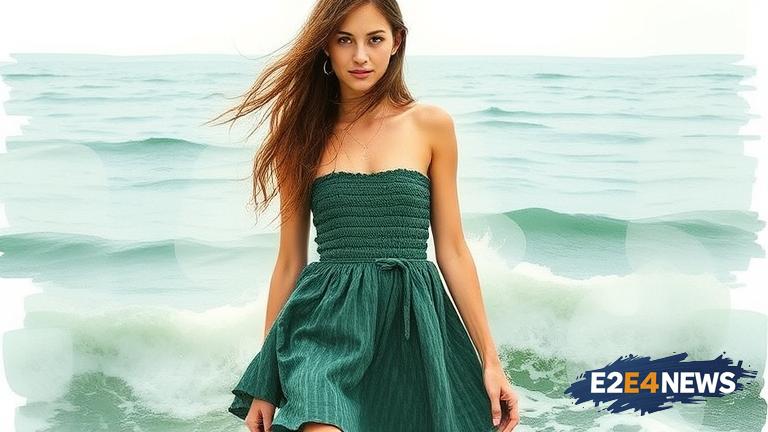In a bold move, a designer has dressed singer Chappell Roan in a garment made from seaweed, sparking conversation about sustainable fashion. The use of seaweed as a material is not new, but its application in high-end fashion is certainly innovative. Chappell Roan, known for her unique style, was the perfect candidate to showcase this unconventional material. The designer, who wishes to remain anonymous, used a combination of seaweed and other eco-friendly materials to create the one-of-a-kind piece. While the look is certainly striking, it’s unlikely that we’ll see seaweed-clad garments hitting store shelves anytime soon. The process of working with seaweed is labor-intensive and requires a great deal of expertise. Additionally, the material itself is highly perishable, making it difficult to work with. Despite these challenges, the designer is passionate about exploring sustainable materials and reducing waste in the fashion industry. The use of seaweed in fashion is just one example of the many innovative approaches being taken to reduce the environmental impact of the industry. From recycled plastics to plant-based materials, designers are getting creative with sustainable fashion. Chappell Roan’s seaweed dress is a testament to the power of fashion as a form of artistic expression and a platform for social commentary. The singer’s willingness to take risks and push boundaries has made her a darling of the fashion world. As the fashion industry continues to evolve, it will be exciting to see how designers incorporate sustainable materials and practices into their work. With the growing awareness of environmental issues, consumers are increasingly demanding more eco-friendly options. The seaweed dress may not be practical for everyday wear, but it’s a thought-provoking statement piece that challenges our assumptions about fashion and sustainability. As we look to the future of fashion, it’s clear that sustainability will play a major role in shaping the industry. With designers like the one behind Chappell Roan’s seaweed dress, we can expect to see more innovative and eco-friendly approaches to fashion in the years to come. The intersection of fashion and sustainability is a complex and multifaceted issue, and one that will require continued creativity and experimentation to resolve. Ultimately, the use of seaweed in fashion is a small but significant step towards a more sustainable future for the industry.
